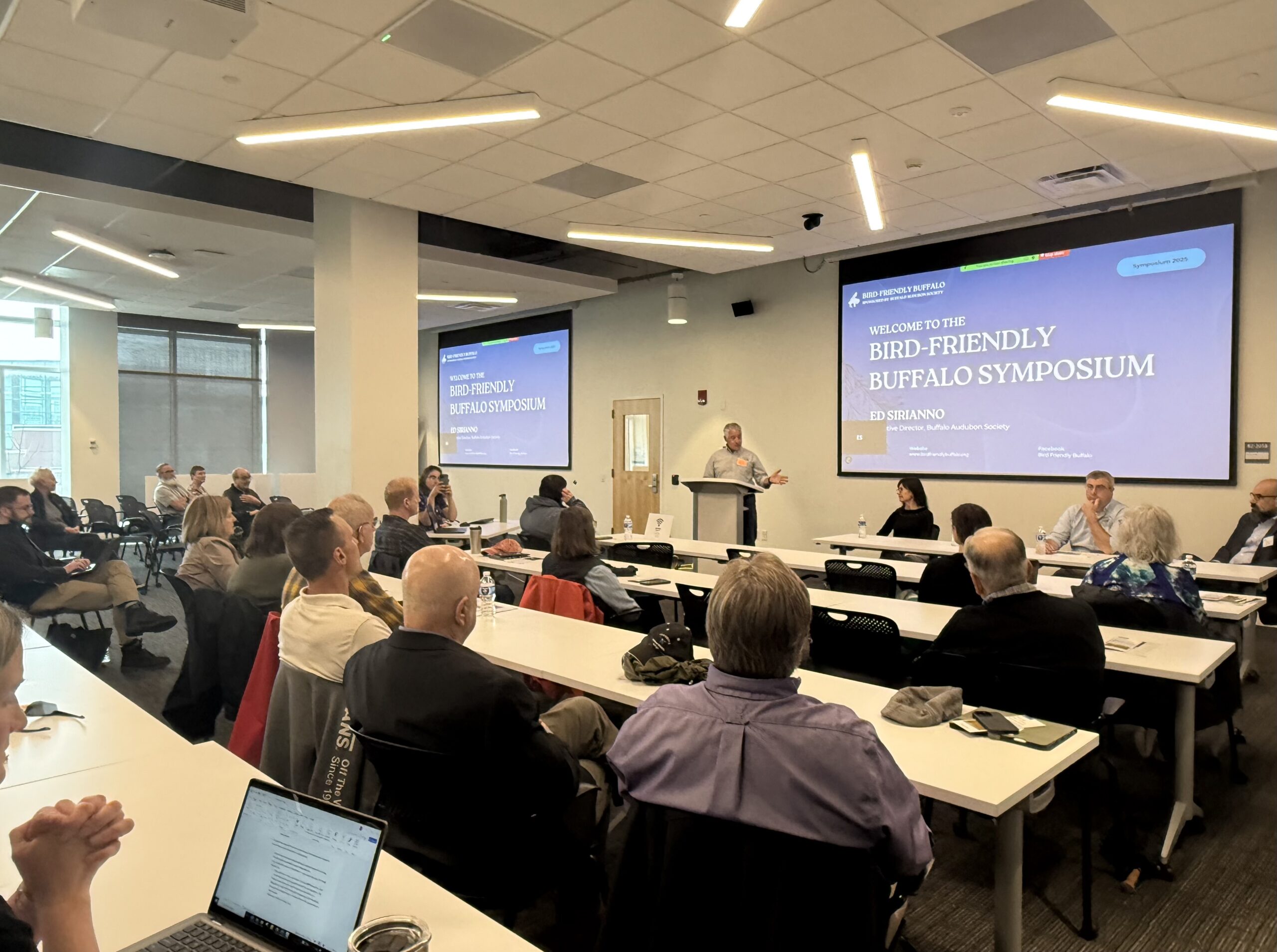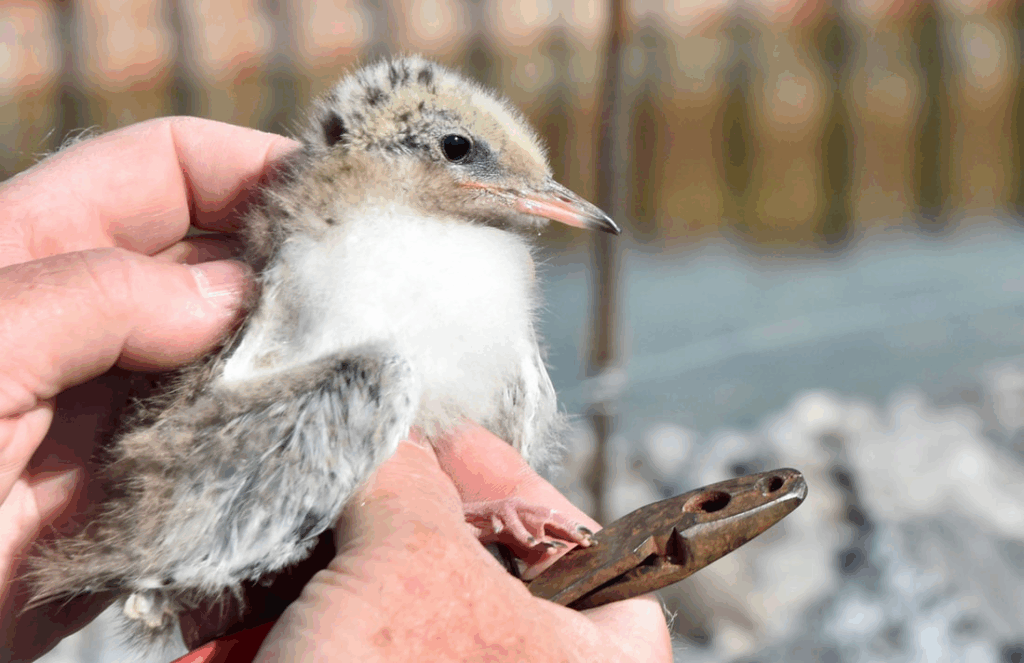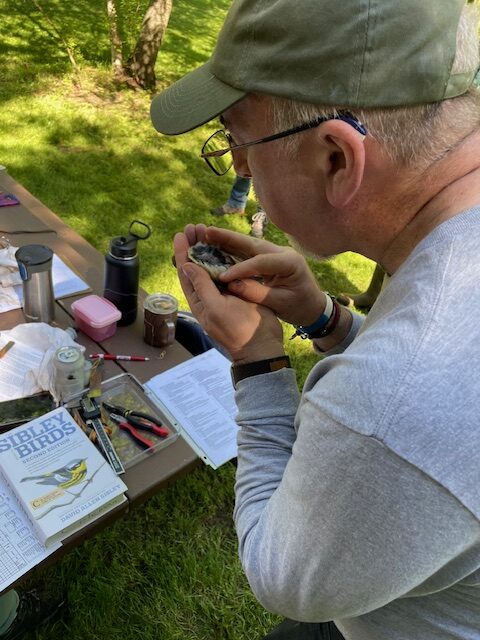Conservation & advocacy work
Our Impact
With deep regional roots, Buffalo Audubon is perennially committed and actively engaged in conservation initiatives and collaborations throughout the region.
Explore our efforts
Cover image by Gerhard Crous on Unsplash
making buffalo a bird-friendly city
Bird-Friendly Buffalo
On Friday, May 2, 2025, Buffalo Audubon kicked off the Bird-Friendly Buffalo movement with an expert-led Symposium highlighting practical solutions for making Buffalo a more bird-friendly region.
We are committed to guiding organizations, homeowners, and others throughout Western New York in cultivating bird-friendly programming and infrastructure that helps birds thrive, and helps our region achieve the official bird-friendly designation.

The Bird-Friendly Buffalo Symposium at the University at Buffalo — Friday, May 2, 2025

Nesting Habitat for a Threatened Species on the Niagara River
Tern Island
Tern Island is the result of a cooperative effort between the Buffalo Audubon Society and the New York State Department of Environmental Conservation. During the nesting season (May to July) the Nesting Colony at Tern Island requires dedicated monitoring by Ornithologists from the NYSDEC and Cornell University.
Gull deterrents are in place at the start of the season that are removed once the Terns arrive. Weekly nest surveys are conducted to determine the amount of eggs and chicks. Chicks are banded before they fledge so returning birds can be observed in following years. The colony faces several threats from predators, including mink, Night-Herons, and Great Horned Owls. Wooden structures are placed on the island for chicks to hide under for protection from predation as well as the elements.
creating awareness for birds & their habitats
Birdathon
Each May, teams from across Western New York spend an entire day searching for as many birds as possible while collecting donations for Buffalo Audubon Society—creating awareness for birds and their habitats.
With more than 150 species recorded each time, Buffalo Audubon has raised thousands in donations.

Buckhorn Island State Park
Buffalo Audubon, in partnership with Audubon Great Lakes, Audubon New York, NYS Parks, Ecology and Environment, and Applied Ecological Services restored critical marsh and forest habitat at Buckhorn Island State Park. The project began in 2014 with removal of invasive species, and is now a completed large scale restoration of over 90 acres of forest and marsh habitat. View data from our bioblitz of recorded observations at the location below, or join us for a birding tour at this location! Email Tom Kerr at tom@buffaloaudubon.org.

committed to western new york since 1909
More Ongoing Initiatives
Community Science

Community Science offers community members the opportunity to contribute to our conservation efforts. This can take the form of feeder watches, bird counts, climate watch efforts, and invasive species management. Soon, we will have a unique opportunity for the public to help us monitor a nesting Common Tern colony in the Niagara River! Stay tuned for more details! If you’re interested in getting involved in community science efforts, email Tom Kerr at tom@buffaloaudubon.org
Our preserves

Buffalo Audubon protects more than 1,000 acres of habitat throughout WNY, on 7 preserves. Beaver Meadow is our only preserve with facilities open to the public. We welcome the public to enjoy the trails at Ghost Pond (just down Welch Road from Beaver Meadow). Keep an eye on our Program Page for our annual summer guided walk of Allenberg Bog, our 390-acre gem with a pristine bog loaded with carnivorous plants and rare orchids!
Native plants

Did you know that an Oak can support over 500 moth and butterfly species, while a Gingko supports only two? Planting trees, shrubs and flowers that provide habitat and food (most importantly, caterpillars!) is one of the most impactful things you can do to support Buffalo’s birds. Check out Bird-Friendly Buffalo and National Audubon’s Plants for Birds resources to see what you can do to support birds, wherever you live! If you’re interested in other ways you can support birds at home, download our free guide!
